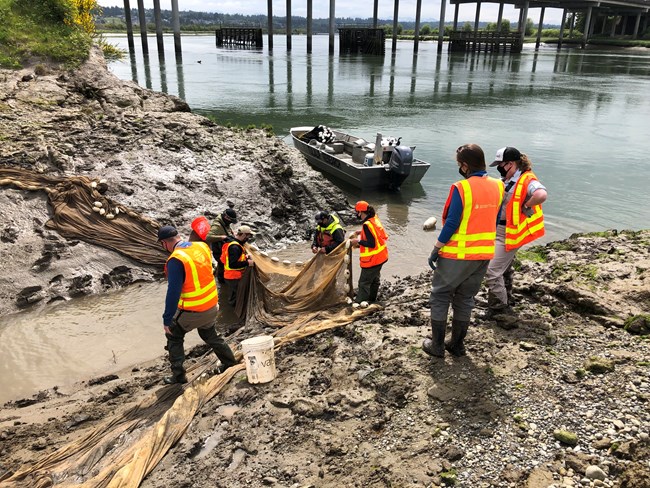Last updated: January 14, 2025
Article
Fort Clatsop—Pacific Northwest Tribes and Climate Change

Washington State Department of Transportation, Flickr, CC BY-NC-ND 2.0
When they reached the Pacific Coast, the expedition members built Fort Clatsop on the Netul River, south of the Columbia, and spent the winter of 1805–1806 there. They did not enjoy the winter weather, complaining of the near constant rain, wind, and fog. As on their journey westward, they relied on the local Indigenous peoples, trading with them for food, woven mats, and useful waterproof hats. The locals were shrewd bargainers who had already been trading with Europeans along the coast for a decade. The goods that came in on European ships moved through Indigenous trading networks throughout the Pacific Northwest.41
Today, using similar networks and interconnections, many Indigenous nations in the Pacific Northwest work together to tackle the impacts of climate change. The PNW Tribal Climate Change Network is one of many cooperating organizations. Fifty-seven different Tribal governments make up the Affiliated Tribes of Northwest Indians. The Northwest Indian Fisheries Commission involves twenty separate groups. Members of these organizations are sharing knowledge and coordinating efforts to address the same kinds of climate change issues seen at many sites along the Lewis and Clark Historic Trail: warmer air and water temperatures, drought, decreased streamflow, changing wetlands, increasing wildfires, rising sea levels, stronger storms, and more. Declining populations of fish and shellfish, loss of harvesting areas, shifting bird and game migration routes, and decreased plant productivity are some specific impacts that affect Indigenous peoples.42
Many of these Indigenous groups have taken actions to adapt to changing conditions and enhance ecosystem resilience. These actions include river restoration and floodplain protection projects, wetlands improvement, forest management and carbon sequestration, and energy efficiency efforts. While each Indigenous nation is unique, they all have historical and contemporary relationships with Pacific Northwest ecosystems and are working to protect them for the future.43
Citations:
41 James P. Ronda, “Lewis & Clark Among the Indians: The Clatsop Winter,” Journals of the Lewis & Clark Expedition, 1984, https://lewisandclarkjournals.unl.edu/item/lc.sup.ronda.01.08.
42 University of Oregon, “PNW Tribal Climate Change Network,” Tribal Climate Change Project, 2024, https://tribalclimate.uoregon.edu/network/; Affiliated Tribes of Northwest Indians, “ATNI Member Directory,” 2019, https://atnitribes.org/membership/atni-members/#tab-id-1; Northwest Indian Fisheries Commission, “Climate Change and Our Natural Resources: A Report from the Treaty Tribes in Western Washington,” November 2016, v–vi.
43 Northwest Indian Fisheries Commission, “Climate Change and Our Natural Resources.”
